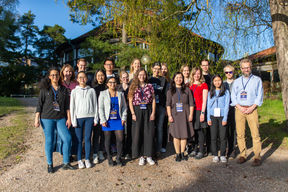
Current group members
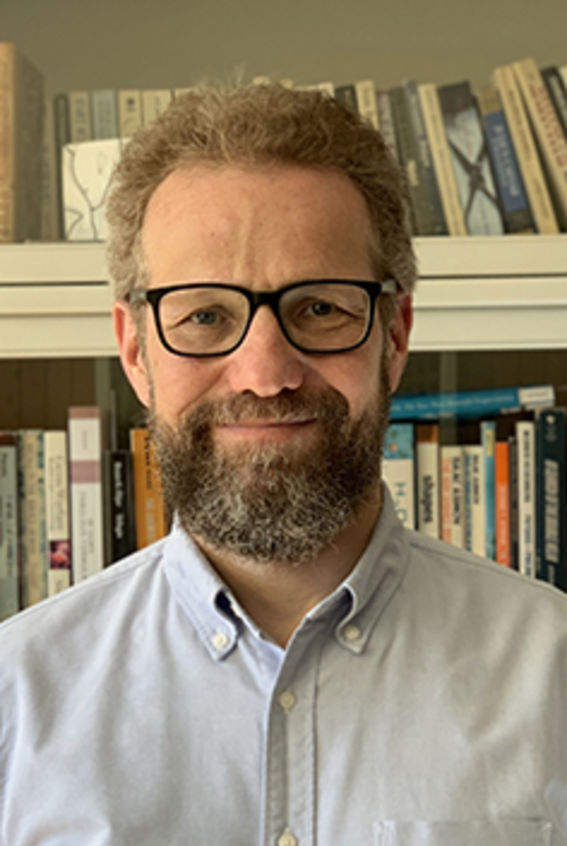
Professor
Markus Linder
I work on making different microbes do useful things. Microbes are incredibly versatile systems for producing different types of materials and chemicals. The microbes can produce proteins that we build materials from. These materials can be something like silk, or cellulose. The special thing is that we can use genetic engineering to program so that the microbes make the materials or chemicals that we want. We also study how microbes communicate with each other in order to get them working better together to make the things we want them to do. When the microbes have made components or chemicals to make materials form our real challenge is to actually construct the materials. This involves using different assembly techniques and characterization. In the future I think that this way of using engineered microbes to produce materials and chemical will allow a sustainable green technology.
Email: markus.linder (at) aalto.fi
Mobile phone: +358504315525
Full researcher profile: https://research.aalto.fi/...
Staff Scientist
Salla Koskela
Fabrication of high-performing yet renewable and biodegradable materials is one of the current challenges in sustainable development. A possible solution is offered by mechanically robust natural polymers such as silk and cellulose that have proven to be excellent candidates for next-generation sustainable materials. Nature also gives us inspiration how to assemble these building-blocks into complex and hierarchical bulk materials. For instance, many biological structures synthetized by living organisms show advanced properties such as self-assembly and functional gradients.
Currently I work in a project where the aim is to fabricate multi-layered engineered living materials (ELMs) that take advantage of these robust natural polymers and the ability of cells to sense their environment and respond to different stimuli. I am especially interested in production of engineered enzymes and proteins in yeast that may be useful in altering the material properties. In addition, advances in synthetic biology have provided us interesting ways to control the material properties. Such living materials have a wide range of potential applications from therapeutic to self-healing purposes.
My key areas of expertise are protein production in fungal hosts, carbohydrate-active enzymes, and the use of enzymes and proteins in fabrication of nanocellulose-based materials.

PhD student
Karoliina Elfving
Microorganisms can be quite astonishing since they contain very unique features that cannot be found anywhere else. Therefore, my interest relies on utilizing these features in biotechnological applications that could assist to transform current processes more sustainable.

PhD student
Tiia Siivola
My research focuses on a unique group of fungal proteins known as hydrophobins. These surface-active and self-assembling proteins have significant potential in various fields of biotechnology, including materials science and food technology, due to their ability to modify surfaces and interfaces. Hydrophobins are naturally expressed by filamentous fungi, though recombinant production using bacterial or fungal hosts can enable a more controlled and efficient process. The ultimate aim is to develop sustainable solutions through persistent and innovative research.
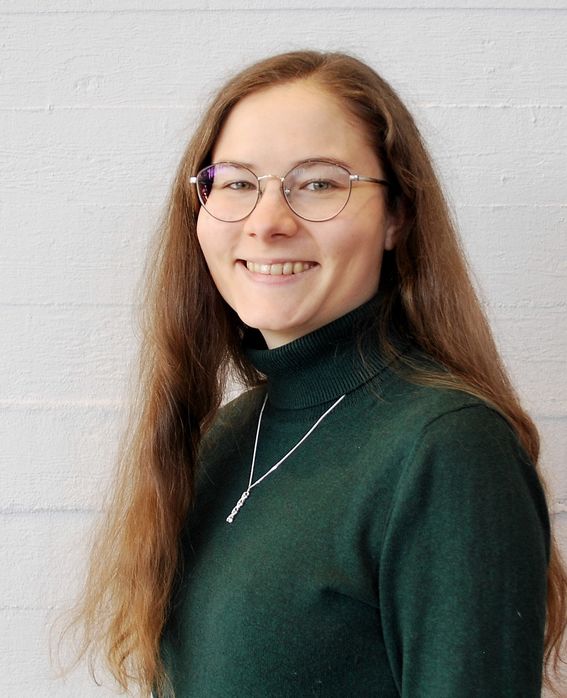
PhD student
Maaria Malkamäki
I am studying liquid-liquid phase separation (LLPS) phenomena of recombinant proteins in vivo. The goal of the research is to gain understanding and control of the phenomena in the natural environment so that it could be better replicated for in vitro studies and for biomaterial manufacturing. I use recombinant silk proteins and hydrophobins in my research. This work will hopefully help us to design better biomaterials in the future and provide valuable information of the LLPS for other fields too.

PhD student
Jianhui Feng
I am interested in the mechanism underlying the self-assembly of biological structures, and I am currently doing my master's thesis, investigating the coacervation of silk-like proteins in yeast.
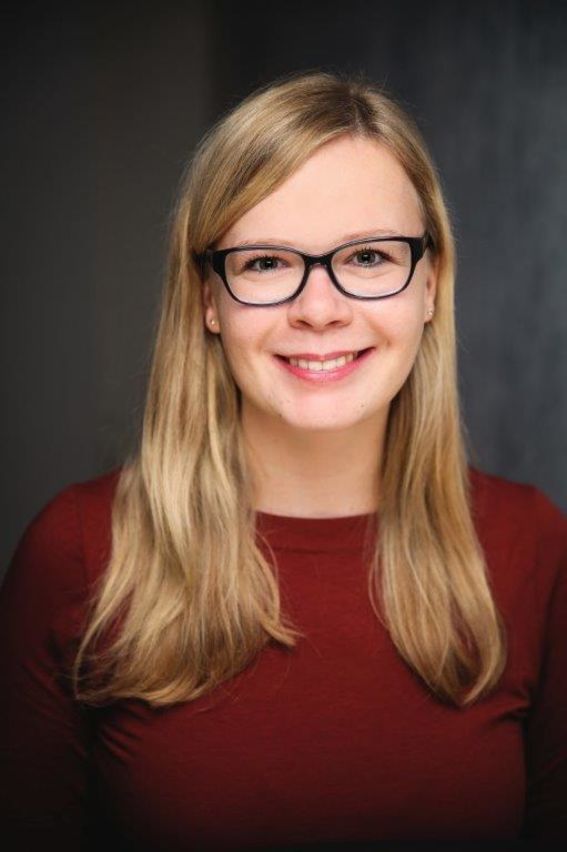
PhD student
Jennifer Tersteegen
The use of sustainable materials, which can be completely recycled and produced under environmentally friendly conditions, plays an increasingly important role. Therefore, I am working on the expression of silk proteins and how they can be combined with cellulose, so that the advantageous mechanical properties of both materials can be used to develop novel composites.
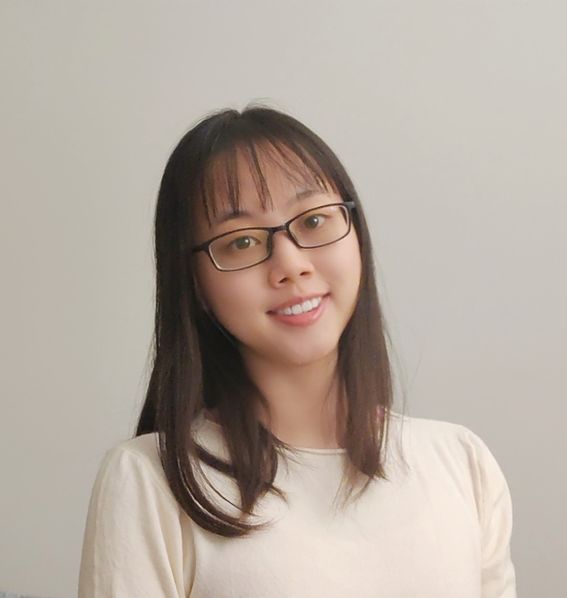
PhD student
Mengjie Shen
I am interested in protein engineering for silk-based biomaterials. The focus of my work is to improve mechanical properties of silk proteins using SpyCatcher-SpyTag or crosslinking systems.

PhD student
Ruxia Fun
Nature is full of wisdom. There are many unique functional structure proteins created by it, such as collagen, resilin, silk and so on. Spider silk is the strongest and toughest one among the protein found so far. Scientist have done a lot of researches on spider silk, but there is still a long way to go before creating artificial materials that simulate or even surpass natural spider silk.
One way to improve the performance of artificial spider silk is to obtain recombinant protein with molecular weight close to that of natural spider silk. The SpyTag/SpyCatcher system is a technology for irreversible conjugation of recombinant proteins. Maybe it can help us. So my research focuses on constructing an efficient Tag/Catcher system to obtain the bigger protein. And then prepare high performance recombinant protein materials. Meanwhile, explore the molecular mechanism behind macroscopic materials to provide guidance for further improving material properties.
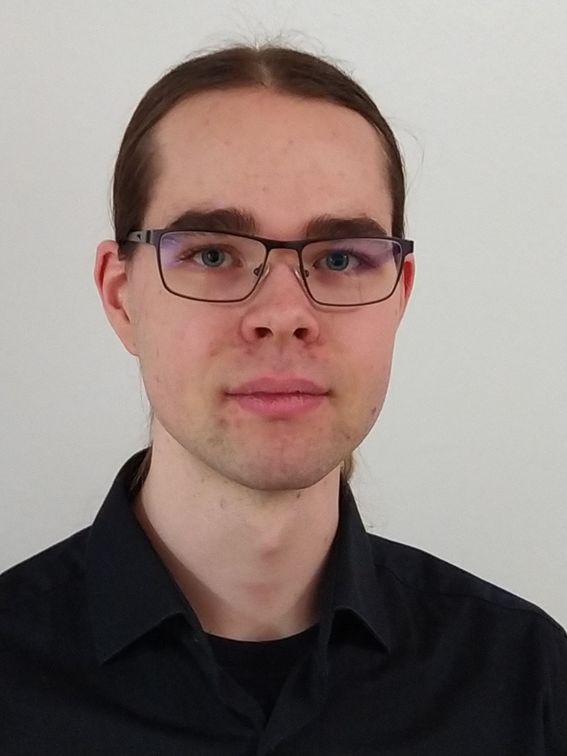
PhD student
Fred-Eric Sammalisto
I study recombinant spider silk proteins which we produce microbially, which is a more feasible and sustainable way of producing spider silk in large scale compared to harvesting it from nature. Furthermore, our microbial production hosts are far more cooperative than spiders.
My research focuses on connecting the material properties of the silk protein dope and its phase behaviour to the mechanical properties of resulting fibers spun in a biomimetic way. The goal is to be able to predict the mechanical performance of fibers from the protein sequence and use the knowledge to engineer spider silk variants with improved functionality. Furthermore, we can take advantage of the microbial hosts to investigate the proteins in vivo by utilizing fluorescent labels and fluorescence-based analytical techniques.
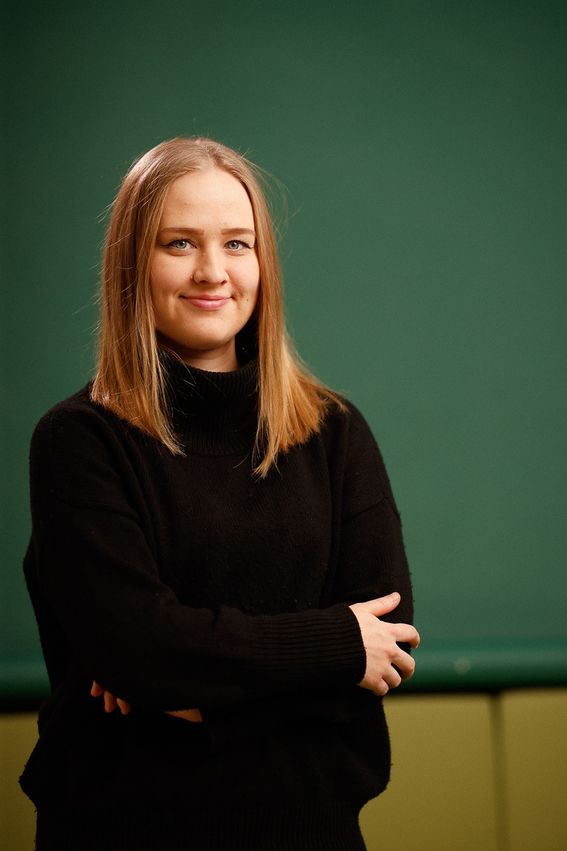
PhD student
Nea Möttönen
Post-translational modifications play a notable role in the three-dimensional structure of proteins and provide possible approaches for modifying silk material functionalities. In my master’s thesis, I am focusing on producing in vivo phosphorylated silk proteins in Escherichia coli by co-expression of silk proteins and kinases. The aim is to determine how the phosphorylation level of the silks can be affected by changing the expression conditions, and if the specificity of the kinase to the silk protein can be enhanced by increasing the local concentration via affinity. In the future, the goal is to see how the phosphorylations affect the properties of the silk.
Master's Thesis Worker
Stefania Aspholm-Tsironi
I am currently working on my master’s thesis, focused on developing methods to produce post-translationally modified, especially phosphorylated and glycosylated adhesive proteins, in Escherichia coli. This research also involves investigating how these modifications affect the properties of those resulting proteins.
Master's Thesis Worker
Cleopatra Siders Silva
Microbial transglutaminases are versatile enzymatic multi-tools with great potential in emerging biomaterials. My masters Thesis work supports the group's research on living materials.
Former group members
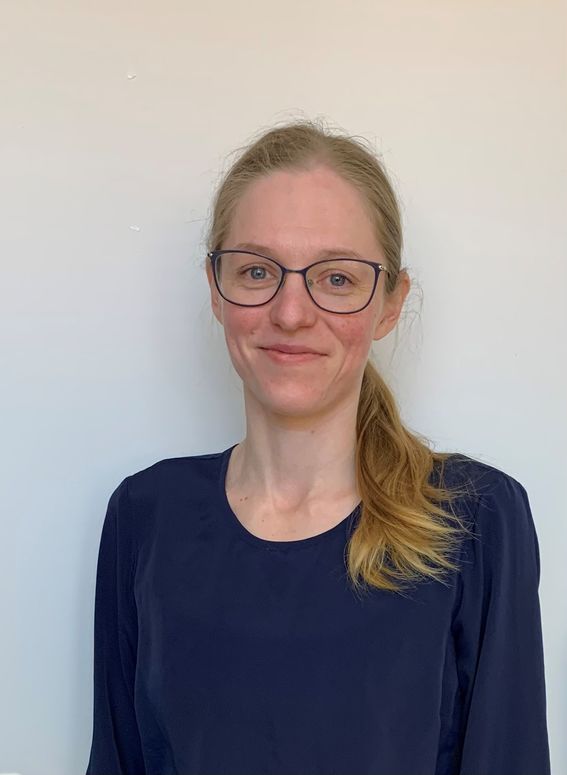
Assistant Professor
Sesilja Aranko
Nature has already solved many of the problems that present-day scientists are struggling with. To give a few examples, she has invented ingenious ways to catalyze and coordinate challenging reactions, to synthesize diverse materials with outstanding properties, and to elegantly coordinate these reactions and biosynthesis in space and time.
My own research deals with the use of biopolymers as building blocks for biomaterials, and frequently takes inspiration from Nature.
At the moment, I focus on silk-based materials and the molecular level mechanisms that guide both their structural organization and properties. Understanding these systems allows us to modulate them in order to achieve sustainable materials with novel properties tailored for a wide range of biotechnological applications. In addition, I’m developing protein ligation methods that could help to circumvent some of the current limitations of recombinant silk production.
Email: sesilja.aranko (at) aalto.fi
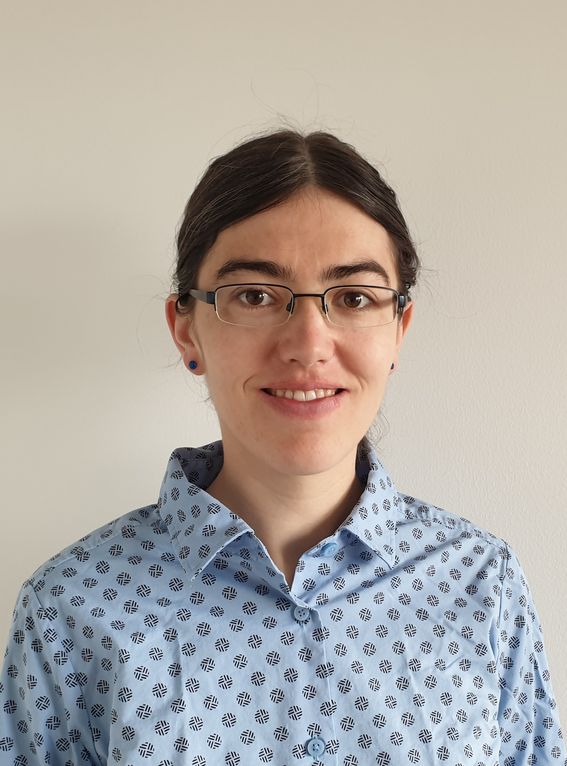
Postdoctoral Researcher
Isabell Tunn
I investigate the process of liquid-liquid phase separation (LLPS), also called coacervation, which is a fundamental principle in the formation of proteinaceous biomaterial building blocks, such as spider silk. LLPS results in the formation of highly concentrated protein microdroplets separated from a dilute phase. Taking inspiration from Nature, the recombinant production of material building blocks offers great potential for the development of renewable, biocompatible and biodegradable high-performance materials for applications in biomedicine and industry. However, in order to develop such materials, it is crucial to gain knowledge about the connection between the behavior of single condensates and the bulk properties of condensate solutions. Therefore, my project aims at understanding the parameters governing LLPS across length scales using rheology, micropipette aspiration, vibrational spectroscopy as well as microscopy techniques. The gained knowledge will be a key to the recombinant production of proteinaceous material building blocks and their utilization in bio-inspired materials.
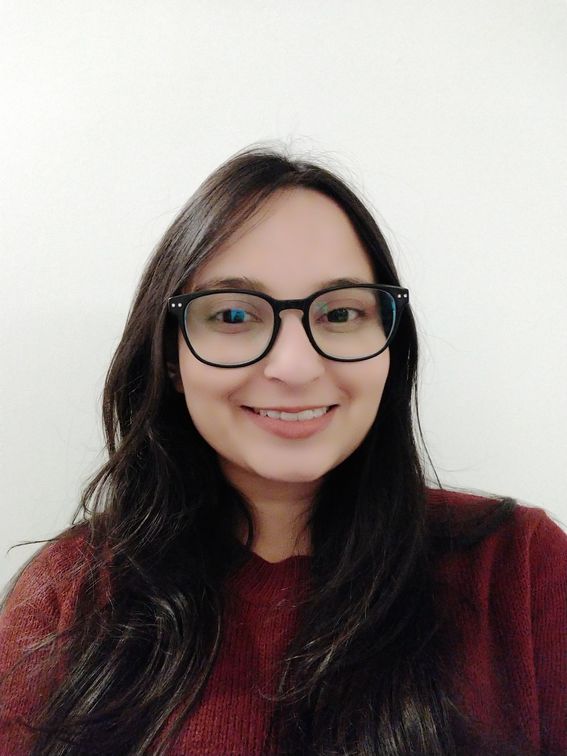
Postdoctoral Researcher
Nelmary Roas
My research has been focused on the aggregation processes of soft colloidal systems under infrasonic vibration and, also in the Bio-inspired microgel and macrogel synthesis. Currently, I am interested in studying the superficial and interfacial forces, adhesiveness properties involved in liquid-liquid phase separation (LLPS) of Mussel-inspired Silk.

PhD student
Christopher Jonkergouw
The central theme in my research is bacterial communication. Bacteria, although unicellular, depend heavily on communication to recognize their surrounding environment and to act as a group. This group behavior increases their chances of survival and successful infection.
There are a wide variety of bacteria that use a wide variety of different communication signals. Some bacteria use signaling for positive effects, such as the bacterial populations inhabiting the microbiome. However, many others use signaling directly for negative effects. For instance, antibiotic resistant bacteria heavily rely on signaling to achieve successful infection. The buildup of rapid resistance to antibiotics is one of the biggest global health problems we currently face.
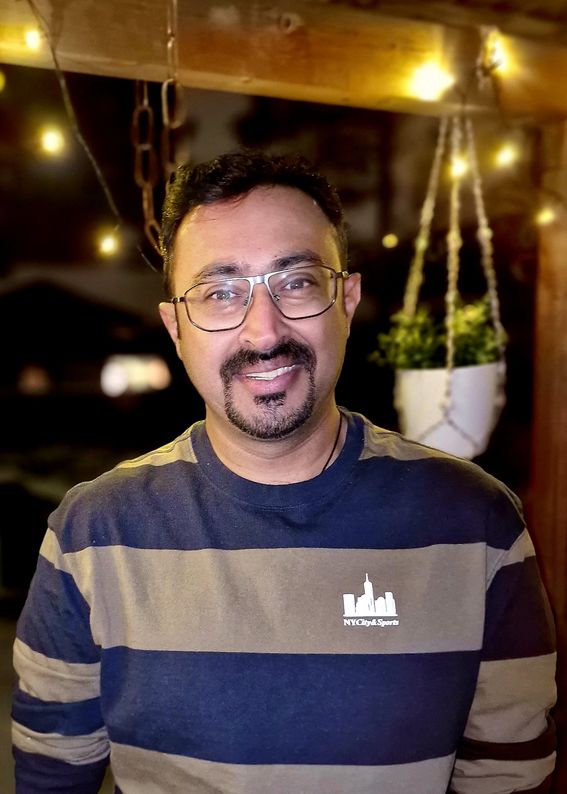
Academy Research Fellow
Rahul Mangayil
ELM 4 PET: Engineering protein secretion routes in Komagataeibacter rhaeticus to design growing functional materials
Natural biological materials synthesized by cells with preprogramed genetic rules from simple raw materials provide sustainable and biodegradable products widely used in the society. Despite of the impressive traits, limited utility of natural materials restricts their application in next generation advanced materials. Cells are considered as nanomaterial factories, raising a critical point, can microbes be programmed as nanomaterial factories to create novel and beneficial biological materials?
My scientific endeavors encompass broad research activities in fields pertaining to bioprocess design and optimization thereof, biomaterials, microbial genetics, and strain engineering. Presently, my research focusses in studying the fundamental genetic facets for protein secretion in Komagataeibacter rhaeticus, a native bacterial nanocellulose producer, to design novel ‘smart’ functional materials. The on-going ELM 4 PET project envisions in developing a material to depolymerize polyethylene terephthalate, with defined focus on the recycle and reuse policies of sustainable bioeconomy.

PhD student
Yin Yin
I am interested in developing and improving the adhesive property of silk-like proteins through the SpyCatcher-SpyTag ligation system, and using the silk-like proteins to achieve composites with excellent mechanical properties.
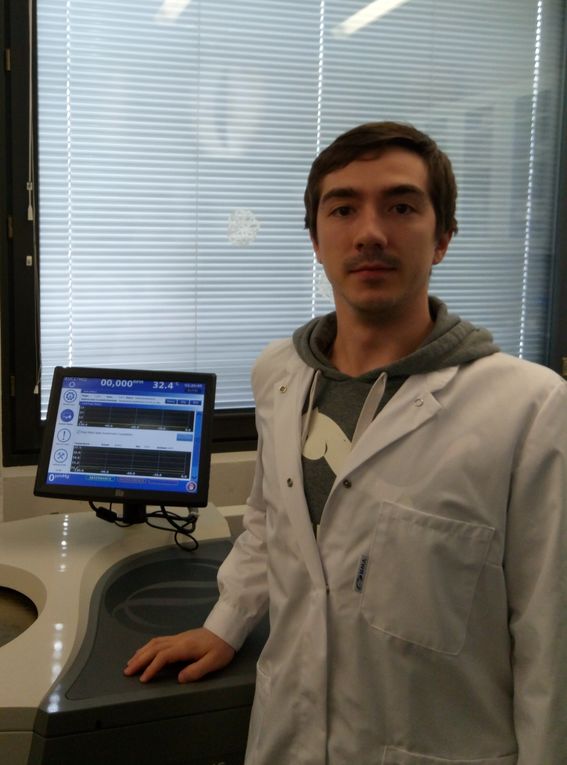
PhD student
Dmitrii Fedorov
My research is based on analytical ultracentrifugation.The technique allows me to study oligomerization processes of different proteins. In particular, I am interested in studying of globular proteins, which plays role of terminal domains in artificial spider silk.
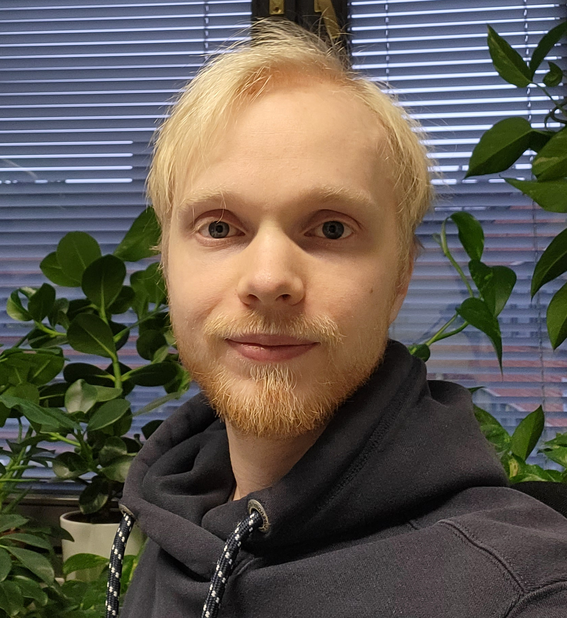
PhD student
Teemu Välisalmi
My research project aims to find pathways to produce high-performance materials from engineered silk proteins. A key aspect of my work involves the development of a silk film deposition method designed to generate a thin layer of silk proteins, arranging themselves into highly hydrophobic conformations. Additionally, I am actively exploring methods to transform engineered silk from its liquid state into robust fibers. For example, in collaboration project with Robotic Instruments group we designed an advanced robotic device capable of both spinning silk and conducting tensile tests.
I also maintain and operate an ion chromatogram specialized in detection of amino acids, and support researchers with their analyses.
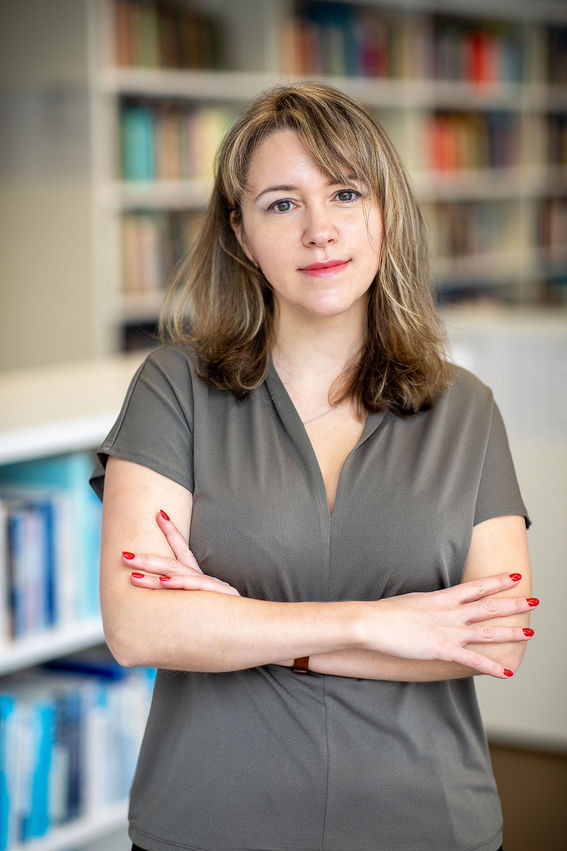
Postdoctoral Researcher
Ekaterina Osmekhina
I study liquid-liquid phase separation of proteins in vivo. We express recombinant proteins with highly disordered sequences, such as silk, in yeasts and mammalian cells and observe formation of condensates inside of the cells.
The other big area of my research is synthetic biology. I am particularly interested in communication between bacteria populations and construction of large and robust genetic circuits.
My main expertise is fluorescent, super resolution and time-laps microscopy.
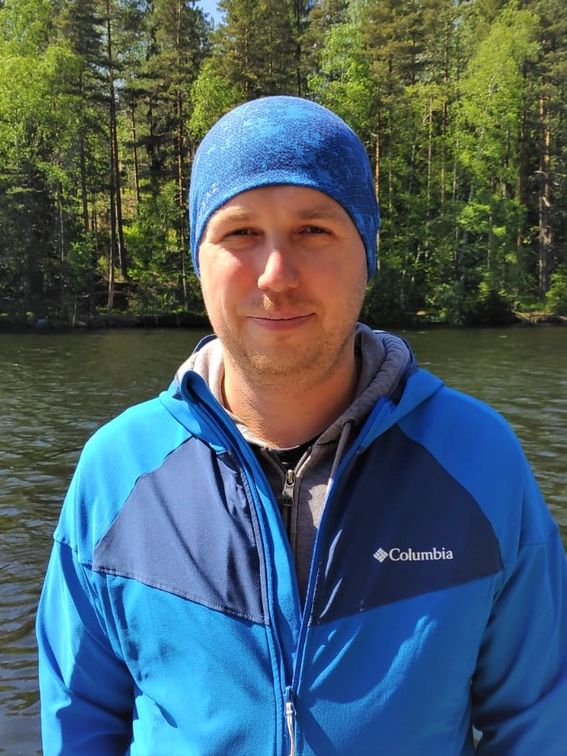
Postdoctoral Researcher
Bartosz Gabryelczyk
I am interested in studying proteins found in biological load-bearing structures, for example spider-silk, elastin, and squid beak. In my research, I use protein engineering and various biophysical techniques in order to understand their structure-function properties and try to apply this knowledge into design of bioinspired composite materials.
Moreover, I am interested in understanding of molecular mechanism and biochemical driving forces involved in liquid-liquid phase separation (LLPS) of intrinsically disordered and amyloidogenic proteins. Using genetic engineering techniques I design recombinant protein-based polymers with tunable LLPS properties for material science applications.
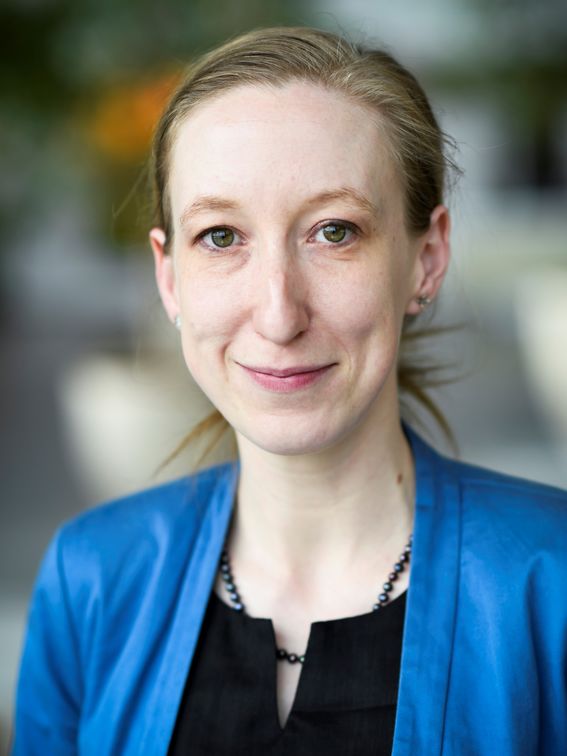
Postdoctoral Researcher
Julie-Anne Gandier
HFBMat: Class I HFB proteins as a modular platform for “smart” nanostructured materials
As functional roles for amyloid structures emerge in Nature, efforts are being made to harness their exceptional stability and hierarchal assembly across length scales in materials applications. Class I hydrophobins (HFBs) are non-catalytic proteins secreted by fungi that form highly stable and organized interfacial amyloid films. These serve a wide range of functions which include forming a hydrophobic “raincoat” at the surface of the fungus and playing roles in surface recognition. The HFBMat project aims to harness these properties and explore the intriguing possibility of applying these proteins as building blocks to produce environmentally responsive nanostructured materials.

PhD student
Bart Rooijakkers
My research is focused on the family 1 Carbohydrate Binding Modules (CBM1), which functions in nature as the guiding and enabling part of fungal cellulose-degrading enzymes. Motivated by the immediate need for sustainable, green materials in our world plagued with micro plastic and climate change catastrophe, an improved understanding of the interaction of CBM1s with various cellulose substrates can be immensely valuable. For example by creating gels of multiple CBM1 proteins (with SpyCatcher-SpyTag conjugation) and nanofibrillated cellulose (CNF) I investigate the role of proteins in biocomposite materials. Alternatively, the effects of CBM1s on the rheological properties of cellulose can aid the enzymatical degradation or functionalization of lignocellulosic materials in the search for new chemicals and materials from forest industry waste streams.
Through genetic engineering I produce fusion proteins in E coli and investigate i.e. their binding to several cellulose and chitin substrates with LC-MS and force spectroscopy techniques, as well as use them to create and characterize nanocellulose – CBM1 gels with extensive rheological measurements.
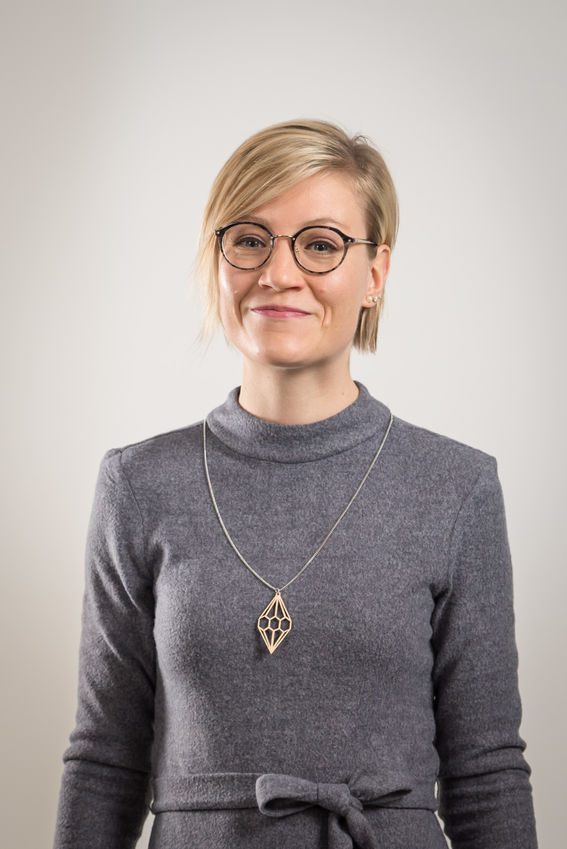
PhD student
Laura Lemetti
I am studying recombinant spider silk proteins and their liquid-liquid phase separation properties. The focus of my work is to understand how a dilute solution of recombinant silk protein can be brought together to form molecular assemblies needed to obtain high performance materials. This will hopefully help us to design diverse biomaterials in the future.
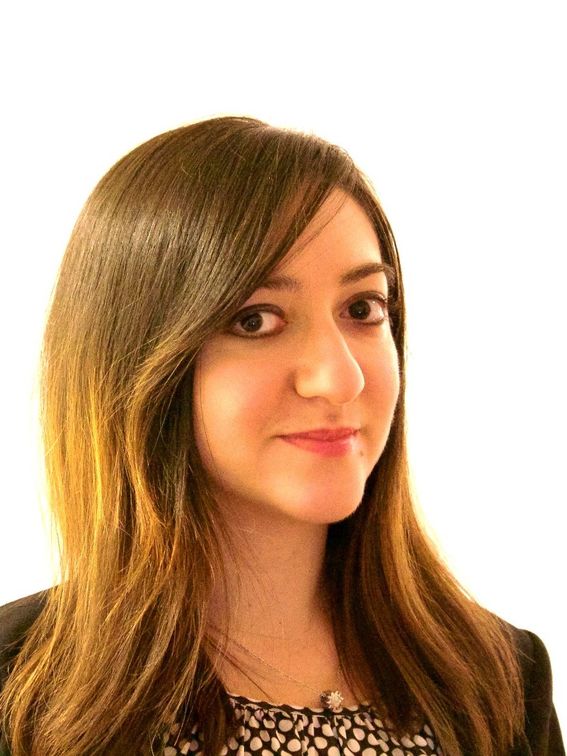
Alessandra Griffo, PhD
My research focuses on the understanding of the forces involved at the surfaces and interfaces of hybrids materials, at single molecular level, in order to design new protein-based composites with high mechanical performance. The driving techniques used are the Atomic Force Spectroscopy and Microscopy.
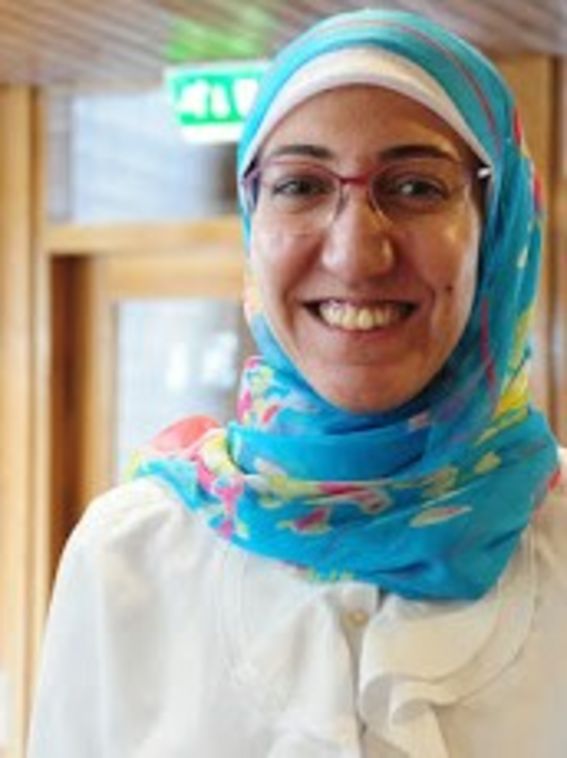
Dina Mosselhy, PhD
I am preparing silica-drug delivery systems, examining their antibacterial and anti-biofilm effects, and evaluating their toxicities.
The aim is to defeat the antibiotic resistance and bacterial biofilms.
The biomedical applications are directed to wound dressings and orthopedic applications.
Aalto People: https://people.aalto.fi/dina.mosselhy#publications
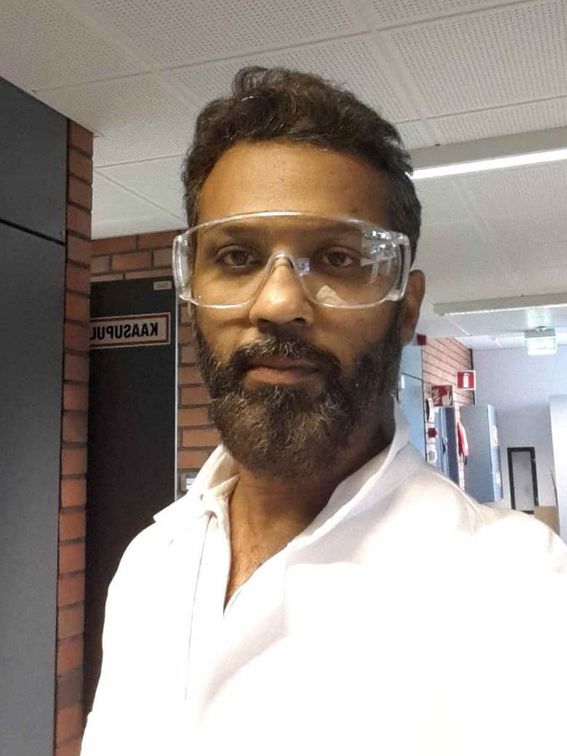
Postdoctoral Researcher
Rama Velagapudi
Cellulose nanofibrils (CNFs) are produced and commonly used in the form of aqueous suspensions or gels. Here, we are studying the rheological properties of CNF interactions with Lytic poly saccharide momo oxygenases (LPMOs) with the linear viscoelastic properties, i.e., frequency-dependent storage and loss moduli; creep recovery, etc. We are also keenly working to understand the effects of various salts(ionic effects) and buffers(pH effects) on the rheological properties of CNF.

Postdoctoral Researcher
Mohammad Mubinur Rahman
My research is focused on the adhesiveness improvement of silk-like proteins as underwater glue. I am applying in vitro enzymatic modification of peptide bound amino acids. I am using protein hydrolysis and post-column ninhydrin detection methods for the identification and quantification of the amino acids.
ORCID






